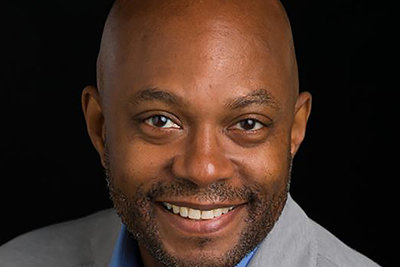by: Gregory Switzer, AIA
Billed as “the architectural and design event of the year,” this year’s AIA conference in San Francisco left me feeling energized and excited about my upcoming term as the first Black President of AIA New York in the organization’s 166-year history. However, amidst the positive experience, a few unsettling observations caught my attention and prompted my further reflection.
Upon my arrival, seeking some much-needed solitude, I decided to dine alone, a luxury that often eludes me in my daily life. As I waited for my meal, which surprisingly cost nearly $100, I turned to my cell phone and began reading the New York Times. There, I discovered that the investment firm that owned the hotel I was staying at, the San Francisco Hilton Union Square, had announced earlier in the day of its intention to walk away from a debt of $725 million and surrender both the Hilton and the nearby Park 55 hotels to its lender. These hotels, comprising almost 3,000 rooms, were facing an uncertain future. To compound matters, I learned that Nordstrom, a prominent department store, had also made the decision to close both its locations in the Westfield Mall—a mere six-minute walk from my hotel—that very same week.
The key factors highlighted in the article included record levels of office vacancies (currently at 30 percent), a reduced number of employees returning to offices, a “weaker than expected” convention calendar through 2027, and ongoing concerns over safety and security. The latter struck a chord with me, particularly as I walked back to my hotel and was confronted with a larger issue looming in the background: Homelessness.
In a city known for its progressive and storied history, it was impossible to ignore the stark visibility of this issue. Numerous boarded-up stores and a high concentration of individuals experiencing homelessness highlighted a societal issue that has become increasingly prevalent throughout the country. As an architect, I contemplated what could be done to alleviate this pressing problem.
Architects possess not only the power to shape the physical environments where people live but also the ability to advocate for how we perceive ourselves and others in society. This is where I believe we missed a valuable opportunity during the conference to openly discuss and challenge the minds of our fellow architects. It would have been truly wonderful to have dedicated sessions addressing the issues of affordability, displacement, and homelessness, and how our profession can contribute to reimagining truly affordable solutions in urban centers. Regrettably, these critical discussions were overlooked. Why did we choose to ignore them?
While conference left me invigorated and hopeful for my new role, I couldn’t help but recognize the unsettling realities of debt-ridden hotels and closed businesses, coupled with the prevalence of the homelessness crisis. As architects, we have the power and responsibility to initiate conversations and create innovative solutions. It is crucial that we seize these opportunities and actively contribute to the reimagining of our urban spaces, ensuring that affordability and social inclusion become central tenets of our architectural endeavors. Only then can we truly fulfill our potential to positively impact society.
Gregory Switzer, AIA, is the managing principal of Gregory Switzer Architecture PC. Notably, he serves as the Immediate Past President of nycobaNOMA and President Elect of AIA New York, the oldest and founding chapter of the American Institute of Architects.








